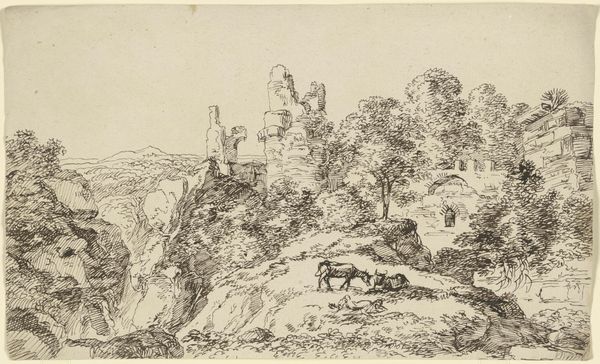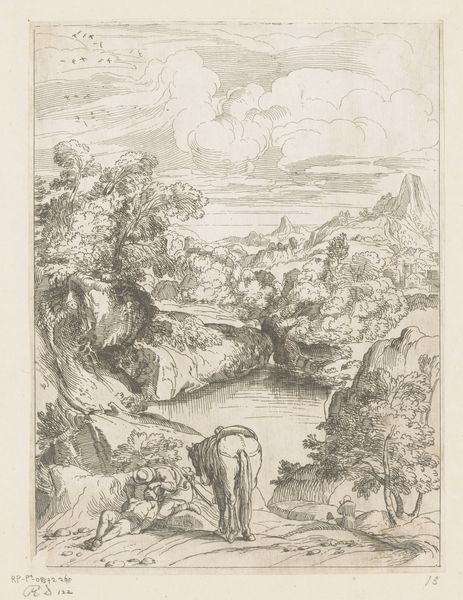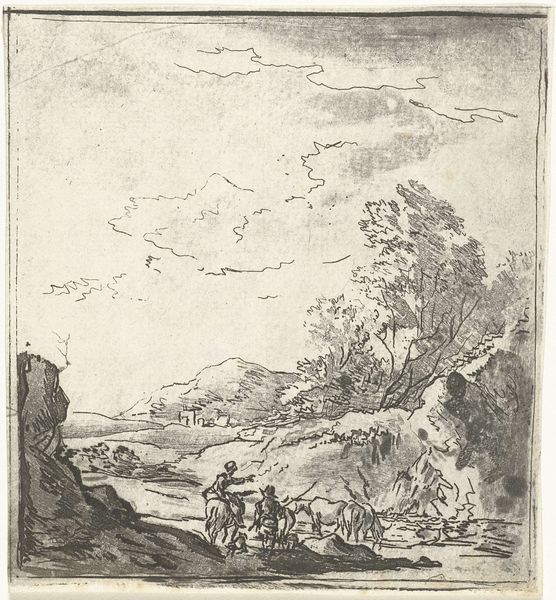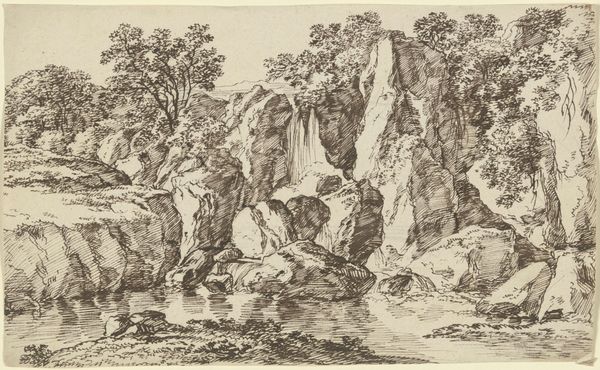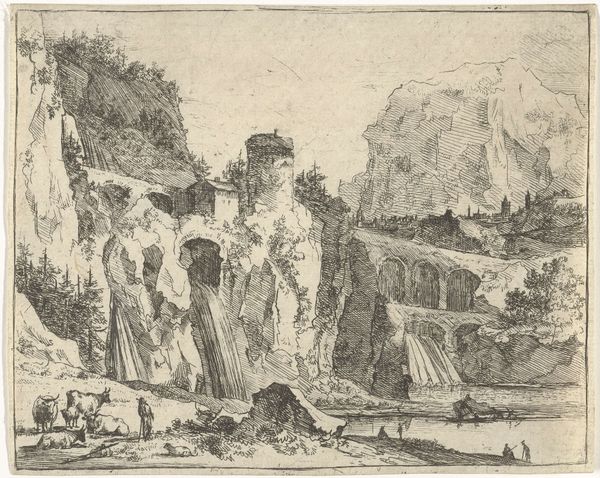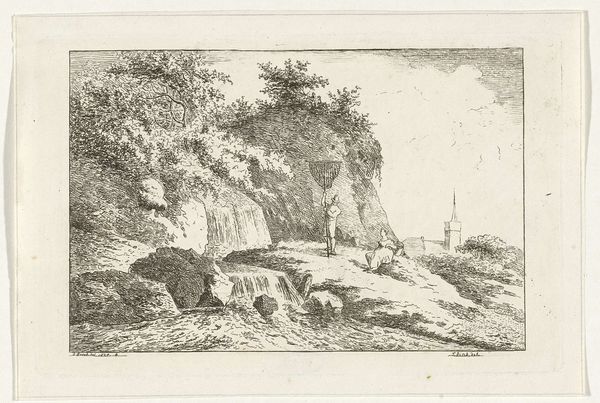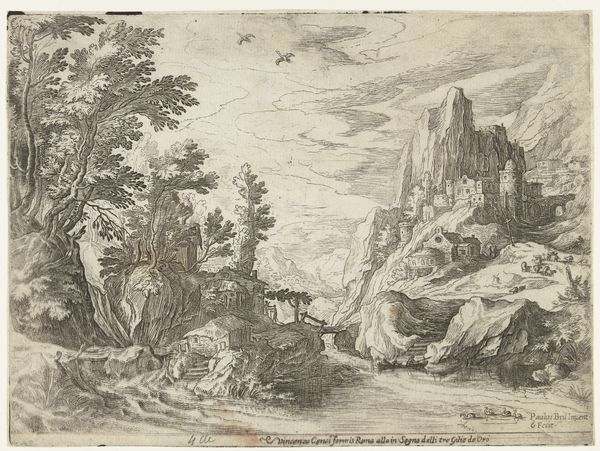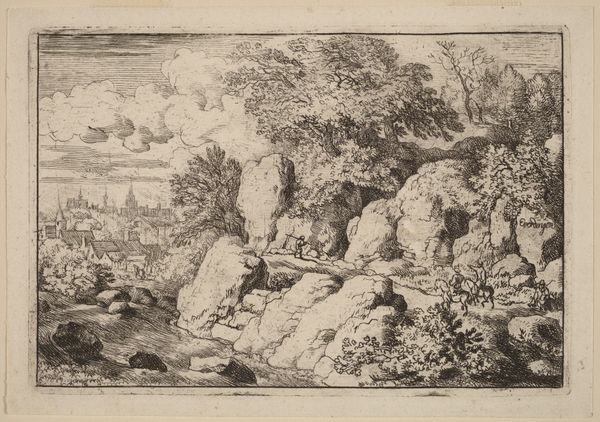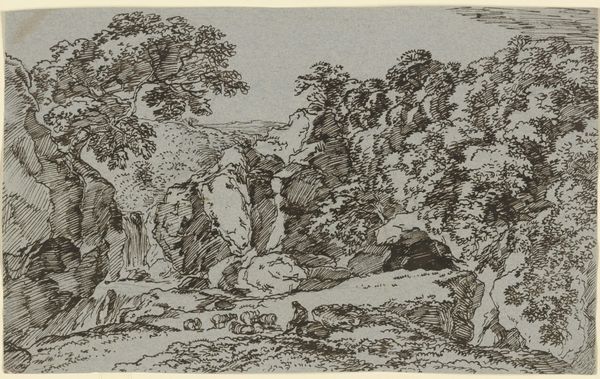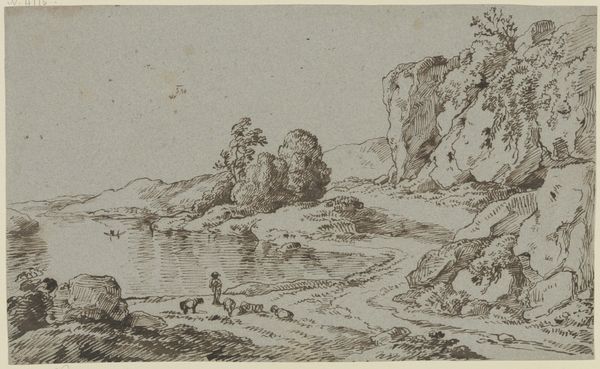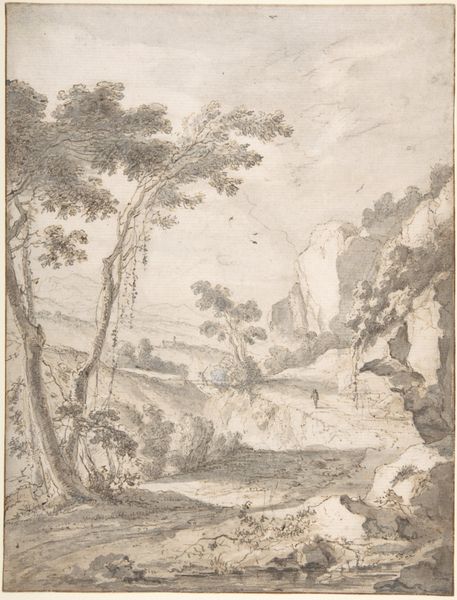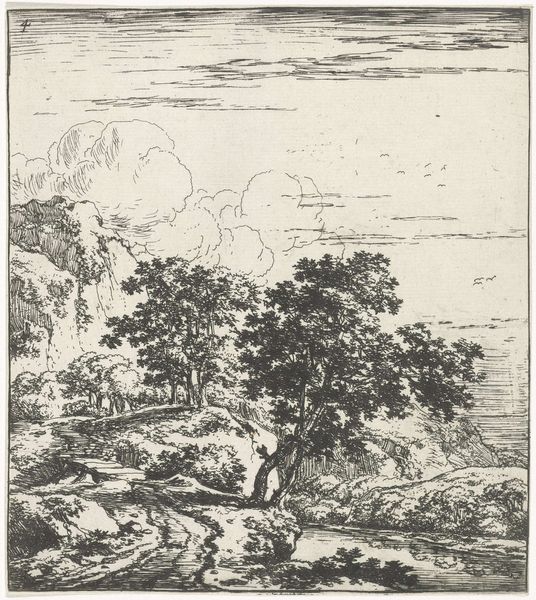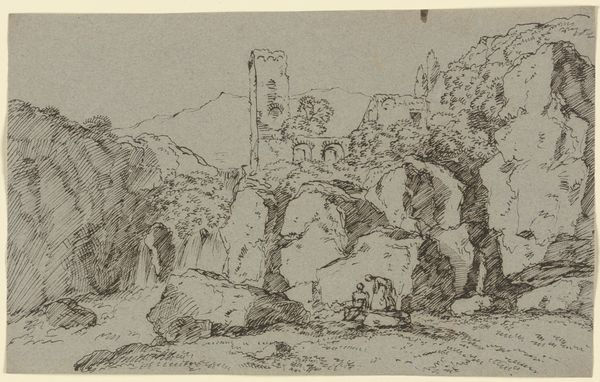
Cascades near Ponte della Trave, with buildings on a rocky outcrop above, from the series 'The Ruins of Rome' 1639
0:00
0:00
drawing, print, etching
#
drawing
#
baroque
# print
#
etching
#
landscape
#
history-painting
#
building
Dimensions: sheet: 4 1/8 x 2 11/16 in. (10.5 x 6.9 cm)
Copyright: Public Domain
Curator: We’re looking at "Cascades near Ponte della Trave, with buildings on a rocky outcrop above," from the series 'The Ruins of Rome,' an etching created in 1639 by Bartholomeus Breenbergh. It's currently held at the Metropolitan Museum of Art. Editor: It's intensely textural, like you can feel the spray of the waterfall just looking at it. Melancholy, too. The buildings are so stark against all that furious water. Curator: Breenbergh was part of a wave of Dutch artists drawn to Italy. This work exemplifies a common 17th-century fascination with the picturesque decay of Roman architecture and landscapes. It speaks to a dialogue between the classical past and the baroque present. Editor: "Picturesque decay" – I love that. It makes me think of the Hudson River School painters, but with a very definite Old World sadness to it. He’s managed to give these buildings this crumbling dignity. They’re not just falling apart, they’re characters in a story, resisting time. Curator: Absolutely. The 'Ruins of Rome' series romanticizes the effects of time, framing ruins as symbols of human impermanence and nature’s triumph, a familiar theme from the era, often laden with political commentary. Editor: I can almost hear the water roaring! This almost frenzied energy of nature contrasts with the steadfast geometry of those architectural remnants, perched precariously up there. It feels like a question about legacy. Will nature erase what we build? Curator: It also represents a critical point in the development of landscape art. This work is a testament to how landscape served as a canvas for wider historical and philosophical reflections. Editor: What gets me is the scale; knowing this is a print makes that intense detail even more captivating. Each scratch of the etching tool becomes part of this story of water and stone. It invites quiet reflection on the grand narratives of history and nature. Curator: A fascinating intersection of Dutch draftsmanship and Italian subject matter. A testament to art’s enduring conversation with place and time. Editor: Exactly! Looking at it now, it feels like a small, perfect storm of history, art, and personal emotion— all captured on a single sheet of paper.
Comments
No comments
Be the first to comment and join the conversation on the ultimate creative platform.
